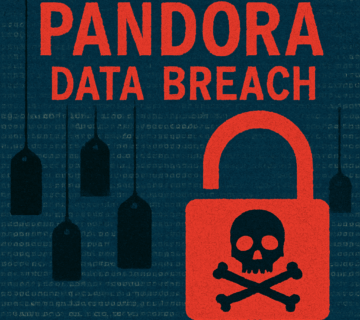Cloudflare Successfully Defends Against Historic 11.5 Tbps DDoS Attack: A New Milestone in Cybersecurity Defense
🎙️ Dive Deeper with Our Podcast!
Cloudflare’s Historic DDoS Defense: A New Cybersecurity Milestone
👉 Listen to the Episode: https://technijian.com/podcast/cloudflares-historic-ddos-defense-a-new-cybersecurity-milestone/
In a remarkable demonstration of cyber defense strength, Cloudflare successfully thwarted the largest recorded distributed denial-of-service (DDoS) attack to date. This extraordinary cyber assault reached an astounding 11.5 terabits per second (Tbps), marking a significant escalation in the scale and sophistication of modern cyber threats.
Understanding the Magnitude of This Cyber Assault
The sheer scale of this attack cannot be understated. To put this into perspective, 11.5 Tbps represents an astronomical amount of data flooding the target simultaneously. This volume of traffic could theoretically overwhelm entire internet infrastructures and render critical online services completely inaccessible within seconds.
The attack methodology employed was a UDP (User Datagram Protocol) flood, a particularly devastating form of DDoS attack that exploits the connectionless nature of UDP packets. These attacks are designed to overwhelm target systems by bombarding them with an excessive volume of data packets, forcing the receiving servers to exhaust their processing resources while attempting to handle the malicious traffic.
The Multi-Week Campaign Behind the Attack
What makes this incident particularly concerning is that it wasn’t an isolated event. Cloudflare revealed that this record-breaking 11.5 Tbps DDoS attack was part of an extensive campaign that persisted for several weeks. During this period, the company’s automated defense systems worked continuously to block hundreds of hyper-volumetric DDoS attacks.
The sustained nature of these attacks suggests a coordinated effort by cybercriminals, potentially indicating the involvement of sophisticated threat actors with substantial resources at their disposal. The fact that multiple attacks reached unprecedented scales demonstrates the evolving capabilities of modern cybercriminal organizations.
Infrastructure Sources and Attack Distribution
Initial reports indicated that Google Cloud infrastructure was a primary source of the malicious traffic. However, subsequent clarifications revealed a more complex attack architecture. The assault actually originated from multiple sources, including various Internet of Things (IoT) devices and cloud service providers across different platforms.
This distributed approach highlights the increasingly sophisticated tactics employed by modern attackers. By leveraging multiple infrastructure sources, the perpetrators aimed to make detection and mitigation more challenging while maximizing the potential impact of their assault.
Google Cloud’s Response and Clarification
Google Cloud representatives quickly addressed the initial reports that suggested their infrastructure was the primary source of the attack. A company spokesperson emphasized that while Google Cloud was indeed one of the sources utilized in the attack, it did not represent the majority of the malicious traffic.
The spokesperson further explained that Google’s abuse detection systems successfully identified the attack and followed appropriate protocols for customer notification and response. This incident underscores the importance of robust abuse detection mechanisms across all cloud service providers.
Technical Analysis of UDP Flood Attacks
UDP flood attacks represent one of the most effective methods for overwhelming target systems. Unlike TCP connections, UDP packets don’t require connection establishment, making them ideal for high-volume attacks. The protocol’s connectionless nature means that targets must allocate resources to process each incoming packet, even if it’s malicious.
In this particular attack, the perpetrators not only maximized data volume but also increased the packet rate to 5.1 billion packets per second (Bpps). This dual approach of high volume and high packet rate creates a perfect storm that can rapidly deplete target system resources, leading to service degradation or complete unavailability.
Historical Context and Growing Threat Landscape
This 11.5 Tbps attack represents a significant escalation from previous records. Just three months prior, Cloudflare had defended against what was then considered a massive 7.3 Tbps DDoS attack. The rapid progression from 7.3 Tbps to 11.5 Tbps in such a short timeframe demonstrates the alarming rate at which cyber threats are evolving.
The May attack, which targeted a hosting provider, lasted 45 seconds and delivered approximately 37.4 terabits of data – equivalent to streaming over 9,000 high-definition movies simultaneously. That attack originated from more than 122,000 IP addresses, showcasing the distributed nature of modern DDoS campaigns.
The Escalating DDoS Threat Statistics
Cloudflare’s mitigation statistics paint a concerning picture of the current threat landscape. During just the first six months of 2025, the company effectively blocked 27.8 million DDoS attacks. This number surpasses the entire year’s total for 2024, which saw 21.3 million HTTP and Layer 3/4 DDoS attacks.
This dramatic increase suggests that cybercriminals are not only launching more sophisticated attacks but are also increasing their frequency. The trend indicates that DDoS attacks are becoming a more common tool in the cybercriminal arsenal, potentially driven by the availability of DDoS-for-hire services and increasingly sophisticated attack tools.
Cloudflare’s Defense Mechanisms
Cloudflare’s ability to successfully defend against these record-breaking attacks demonstrates the effectiveness of modern cybersecurity defense systems. The company’s autonomous blocking capabilities played a crucial role in neutralizing the threat without human intervention, highlighting the importance of artificial intelligence and machine learning in cybersecurity defense.
The company’s robust DDoS detection and mitigation capabilities represent years of investment in cybersecurity infrastructure. These systems can analyze traffic patterns in real-time, identify malicious activity, and implement countermeasures within seconds of attack initiation.
Industry Implications and Future Preparedness
This incident serves as a wake-up call for the entire cybersecurity industry. The rapid escalation in attack volumes demonstrates that organizations must continuously evolve their defense strategies to match the growing sophistication of cyber threats.
The use of legitimate cloud infrastructure for launching attacks also raises important questions about responsibility and security measures across the cloud services ecosystem. Service providers must implement more robust monitoring and abuse detection systems to prevent their infrastructure from being weaponized by malicious actors.
Best Practices for DDoS Protection
Organizations seeking to protect themselves against similar attacks should consider implementing multi-layered defense strategies. This includes deploying advanced DDoS protection services, implementing rate limiting mechanisms, and maintaining detailed incident response procedures.
Regular security assessments and penetration testing can help identify vulnerabilities that could be exploited during DDoS attacks. Additionally, organizations should ensure they have adequate bandwidth and server capacity to handle unexpected traffic spikes.
FAQ Section
What makes this DDoS attack historically significant?
This attack reached 11.5 Tbps, making it the largest DDoS attack ever recorded. The scale represents a significant escalation from previous record-holding attacks and demonstrates the evolving capabilities of cybercriminals.
How long did the record-breaking attack last?
The 11.5 Tbps attack lasted approximately 35 seconds. Despite its relatively short duration, the intense volume of traffic could have caused significant disruption without proper defense mechanisms.
What exactly is a UDP flood attack, and what makes it so effective?
A UDP flood attack involves sending a massive volume of UDP packets to overwhelm a target system. UDP packets are connectionless, meaning the target must allocate resources to process each packet, quickly exhausting system capabilities when faced with high-volume attacks.
Was the attack mainly driven by Google Cloud services?
Initial reports suggested Google Cloud was the main source, but subsequent clarifications revealed that multiple infrastructure sources were used, including various IoT devices and cloud providers. Google Cloud was just one of several sources involved, rather than the main contributor.
How many DDoS attacks has Cloudflare blocked recently?
In just the first half of 2025, Cloudflare stopped 27.8 million DDoS attacks—already exceeding the 21.3 million mitigated throughout all of 2024.
What can organizations do to protect themselves from similar attacks?
Organizations should implement multi-layered DDoS protection services, maintain adequate bandwidth capacity, deploy traffic monitoring systems, and develop comprehensive incident response procedures.
How quickly can modern DDoS protection systems respond to attacks?
Advanced systems like Cloudflare’s can detect and begin mitigating DDoS attacks within seconds of initiation, often before the attacks can cause significant disruption to services.
Why are DDoS attacks becoming more frequent?
The increase in DDoS attacks can be attributed to the growing availability of DDoS-for-hire services, more sophisticated attack tools, and the expanding number of connected devices that can be compromised for botnet operations.
How Technijian Can Fortify Your Cybersecurity Defense
In light of these escalating cyber threats, partnering with experienced cybersecurity professionals becomes crucial for organizational protection. Technijian offers comprehensive cybersecurity solutions designed to defend against sophisticated DDoS attacks and other evolving cyber threats.
Our expert team specializes in implementing multi-layered defense strategies that combine cutting-edge technology with proven security methodologies. We provide 24/7 monitoring services, rapid incident response capabilities, and customized protection solutions tailored to your organization’s specific requirements.
Technijian’s cybersecurity services include advanced DDoS protection implementation, network security assessments, real-time threat monitoring, and comprehensive security infrastructure design. Our specialists work closely with clients to develop robust defense mechanisms that can withstand even the most sophisticated cyber attacks.
Don’t wait for a cyber attack to expose vulnerabilities in your organization’s security posture. Contact Technijian today to schedule a comprehensive security assessment and learn how our expert cybersecurity solutions can protect your critical digital assets from the ever-evolving landscape of cyber threats.
With Technijian’s expertise and proven track record in cybersecurity defense, your organization can maintain operational continuity even when facing the most challenging cyber threats. Let our team of certified security professionals help you build an impenetrable digital fortress that keeps your business secure and your customers’ trust intact.
About Technijian
Technijian is a premier managed IT services provider, committed to delivering innovative technology solutions that empower businesses across Southern California. Headquartered in Irvine, we offer robust IT support and comprehensive managed IT services tailored to meet the unique needs of organizations of all sizes. Our expertise spans key cities like Aliso Viejo, Anaheim, Brea, Buena Park, Costa Mesa, Cypress, Dana Point, Fountain Valley, Fullerton, Garden Grove, and many more. Our focus is on creating secure, scalable, and streamlined IT environments that drive operational success.
As a trusted IT partner, we prioritize aligning technology with business objectives through personalized IT consulting services. Our extensive expertise covers IT infrastructure management, IT outsourcing, and proactive cybersecurity solutions. From managed IT services in Anaheim to dynamic IT support in Laguna Beach, Mission Viejo, and San Clemente, we work tirelessly to ensure our clients can focus on business growth while we manage their technology needs efficiently.
At Technijian, we provide a suite of flexible IT solutions designed to enhance performance, protect sensitive data, and strengthen cybersecurity. Our services include cloud computing, network management, IT systems management, and disaster recovery planning. We extend our dedicated support across Orange, Rancho Santa Margarita, Santa Ana, and Westminster, ensuring businesses stay adaptable and future-ready in a rapidly evolving digital landscape.
Our proactive approach to IT management also includes help desk support, cybersecurity services, and customized IT consulting for a wide range of industries. We proudly serve businesses in Laguna Hills, Newport Beach, Tustin, Huntington Beach, and Yorba Linda. Our expertise in IT infrastructure services, cloud solutions, and system management makes us the go-to technology partner for businesses seeking reliability and growth.
Partnering with Technijian means gaining a strategic ally dedicated to optimizing your IT infrastructure. Experience the Technijian Advantage with our innovative IT support services, expert IT consulting, and reliable managed IT services in Irvine. We proudly serve clients across Irvine, Orange County, and the wider Southern California region, helping businesses stay secure, efficient, and competitive in today’s digital-first world.





